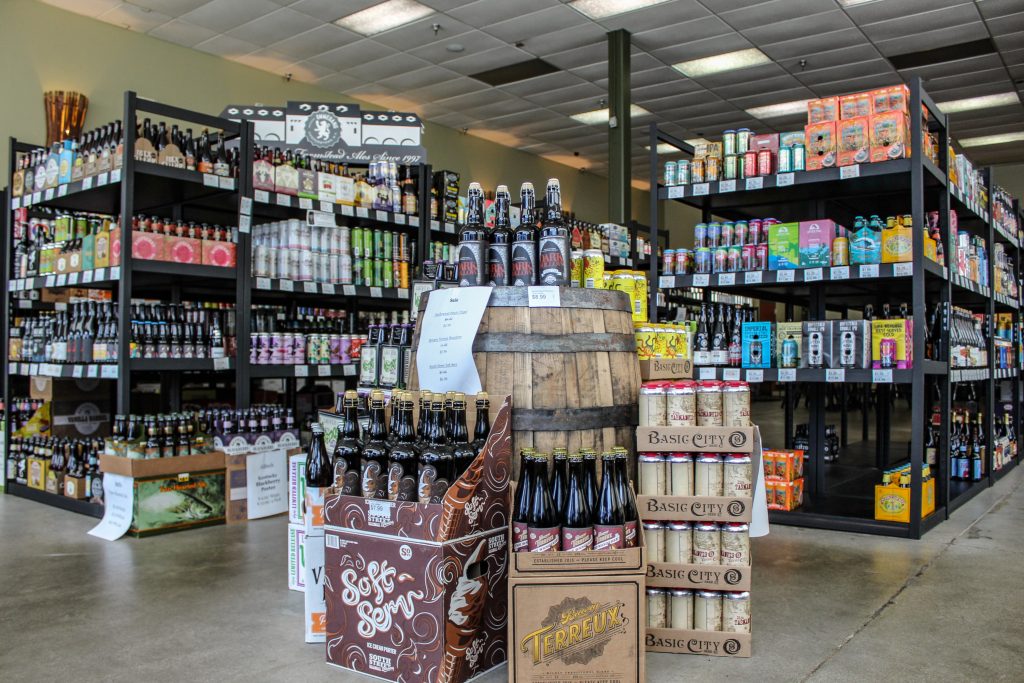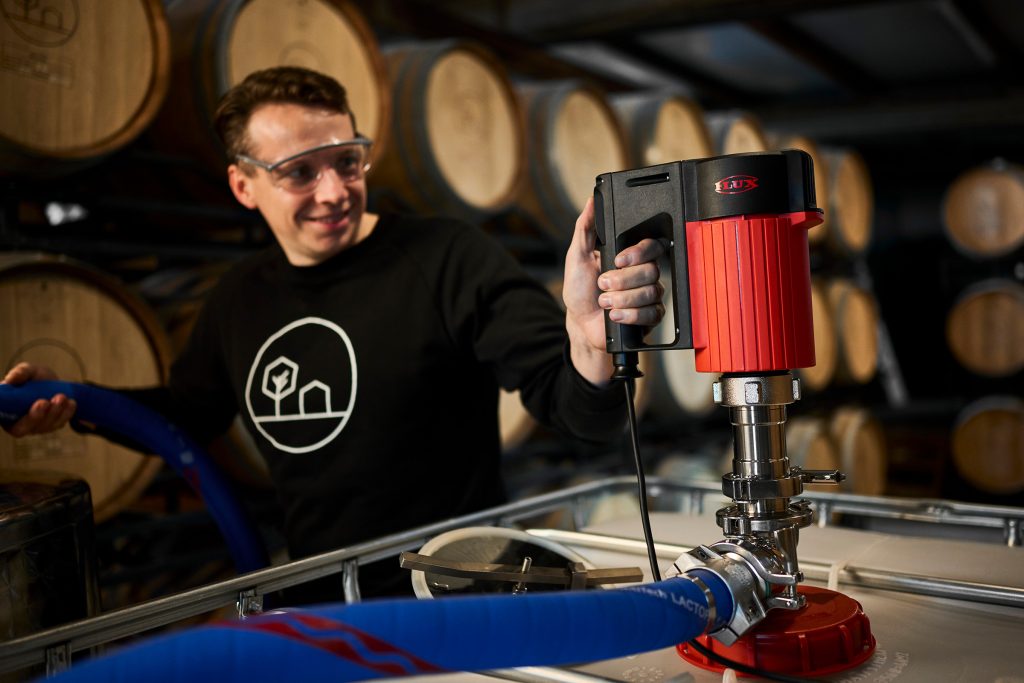
By: Alyssa L. Ochs
Of course, the primary goals in the craft beverage industry are to drive a profit, make money and sustainably secure the business. However, an increasing number of breweries and distilleries have become so entrenched in their local communities that it only makes sense to give back to charitable causes when possible.
Craft beverage philanthropy is on the rise in the U.S., and there are many creative ways in which brewers and distillers can embrace this trend of doing good while drinking well. There are some valuable lessons to learn from beverage businesses that are focusing a portion of their efforts on philanthropy, which are inspiring if you are looking to host a charity event or donate a portion of sale proceeds to raise money for local causes in your community.
How Breweries & Distilleries Can Approach Philanthropy
Breweries and distilleries can take a variety of approaches to add a charitable element to their operations. The level of community involvement may vary based on the owner’s interests, the size of the craft beverage establishment and the number of staff members available to help with projects outside the realm of making beer and spirits.
Some craft beverage businesses are skilled at hosting events, partnering with local nonprofits and using social media to get the word out about needs in the community. Other establishments are willing to try profit sharing with partner charities and give direct donations to organizations working in specific fields of interest, such as early childhood education, homelessness or workforce development. A craft beverage producer can also give back to the community through beer or spirit collaborations, supporting local growers by purchasing homegrown ingredients and hosting art shows featuring local artists. Meanwhile, some beverage producers choose to focus on their own internal sustainability practices instead to make their operations eco-friendlier through recycling, water conservation and energy-saving programs.
Besides just feeling good about what you do and what you brew, there are many benefits to embracing philanthropy in the craft beverage industry. Getting more involved with local causes increases exposure to a business and builds brand awareness. A brewery or distillery can build greater support among like-minded and community-supporting patrons while engaging with customers on a deeper level. Adding a philanthropic element to a business can help create a more community-centered taproom, generate good press to compensate for a past issue and even result in valuable tax benefits at the end of the fiscal year.
Examples of Craft Beverage Philanthropy
All across the country, you can find excellent examples of how craft beverage businesses engage in philanthropy without sacrificing product quality or putting a compromising strain on their budget. For instance, Ex Novo Brewing, which launched in Portland, Oregon and also has a presence in New Mexico, was the first nonprofit craft brewery in America and has referred to itself as a “permanent fundraiser to support causes.” Charitable causes supported by Ex Novo include Oregon Wild, Friends of the Children, Mercy Corps and Impact NW.
Deschutes Brewery in Portland, Oregon, teamed up with Dovetail Workwear to support women’s success in pursuing non-traditional occupations.
The Phoenix Brewing Company in Mansfield, Ohio, has been involved in philanthropy since it opened in 2014 through special beer releases, apparel sales, sponsorships and fundraising events. It has supported summer camps for children with special challenges, a community theater, a winter coat drive, a homelessness initiative and a brain cancer research organization. Phoenix Brewing is unique in that it accepts requests for donations and sponsorships directly through its website and is a non-tipping establishment. If customers leave cash behind as a tip, the brewery donates it to a designated charity each month.
Pennsylvania’s Tired Hands Brewing Company is another beverage business that streamlines the funding process and outlines its donation guidelines and application protocols on its website to be refreshingly accessible to local charities.
Service Brewing, started by an army veteran who served in Iraq, is a Savannah, Georgia brewery that has donated a portion of brewery tour profits and promoted charities that include police, fire and first-responder organizations. Over the years, the brewery has raised over $110,000 for local, regional and national groups.
Franklins, a family-friendly brewery in Hyattsville, Maryland, is dedicated to giving back to its local community and donated over $200,000 through a fundraiser program for local schools, environmental groups and progressive advocacy organizations. It also supports its community by partnering with local farms to source ingredients and the town’s art alliance organization to showcase the work of local artists.
Finnegans Brewing Company in Minneapolis, Minnesota, has a policy of supporting local food banks and helping food banks work with farmers in the area.
In Milton, Delaware, Dogfish Head is a large and well-known brewery that launched a Beer & Benevolence program to support over 150 nonprofits annually. Funded organizations include the Delaware Historical Society, Delaware Nature Society and Nature Conservancy.
To dip a toe into the realm of philanthropy without going overboard right away, breweries and distilleries might consider centering giving around just one special, limited-release beverage.
For example, an Ashland, Virginia brewery, Center of the Universe Brewing, made a Homefront IPA and donated all proceeds of the beer to a nonprofit that helps military troops and veterans. It often makes the most sense to link a beverage company’s history and the founders’ interests to philanthropic engagement.
An example is SweetWater Brewing Company in Atlanta, Georgia, which started a long-term, multi-year clean water campaign to improve the local water supply and focuses its giving on environmental groups in the region.
You might also tap into the intersection of craft beverages and art, like Horse Thief Hollow in Chicago, Illinois, which has partnered with a neighborhood art alliance to turn the business walls into an impromptu art gallery that displays the works of local artists.
Another way beverage businesses can boost community involvement is to partner with local sports teams. In Indianapolis, Indiana, craft breweries have created beers that pair with the charitable efforts of local sports teams, including the NFL’s Indianapolis Colts. The local brewery and bistro, Triton, created a Pink Ribbon Saison with pink and white peppercorns to celebrate Women’s History Month and compliment the breast cancer research funding of the city’s professional football team.
Creative Ideas and Looking Ahead
For breweries and distilleries that have a handle on their essential operations and are ready to take the next step in community involvement, now is a great time to establish partnerships with local charities. Business owners can harness the trendiness and popularity of craft beer to spark awareness about people, animals and natural resources in need of attention.
Yet there is no shortage of challenges that come with pairing craft beer and spirits with philanthropy. Selling products must always remain the top priority for these businesses to stay operational, and there will always be public scrutiny about which charities they support and transparency with regard to how the money is used. The quality of the beer and spirits produced must come first so that customers keep coming back and supporting the business and the affiliated charities. If the quality declines, craft beer fans may just as well donate to charities on their own without any craft beverage connection.
There are also challenges with finding staff members who can manage charitable work, getting the word out about philanthropic efforts, establishing donation guidelines and having enough money to go around. However, this is an exciting time to get involved in the world of craft beverage philanthropy because of how prominent beverage producers have become in their local communities and the potential power and influence they hold for rallying community members to enjoy their favorite drinks with a greater purpose.
As a craft beverage producer, one of the best ways to launch a philanthropic campaign is to learn from the examples of what other breweries and distilleries have done in the past and contact their teams for details, feedback and mentorship. If corporate philanthropy is an interest within your ownership and staff, it may also be worth reaching out to the local community foundation in your area to discuss options for opening up a fund, donating to specific programs or starting an endowment. Most major cities and even broader regions serving multiple counties have well-established community foundations that can offer advice, resources and training about taking a more philanthropic angle as a charitable side venture.
Despite hard hits from the pandemic, recession and labor crisis, specialized companies are also emerging to connect the business industry to the nonprofit sector. One example is Positive Legacy, a collective group of nonprofit and event industry professionals that created the Pours for Positive campaign to engage craft beverage companies in nonprofit engagement and outreach for mutually beneficial results and a more vibrant and sustainable community. The Brewers Association also provides resources and tips for producers navigating the complex world of philanthropy. Industry-specific recommendations include adding an online donation request form to your website, hosting events that bring a charity into your business and ensuring donations boost taproom sales with silent auctions and gift cards that draw more business to your doorstep.









